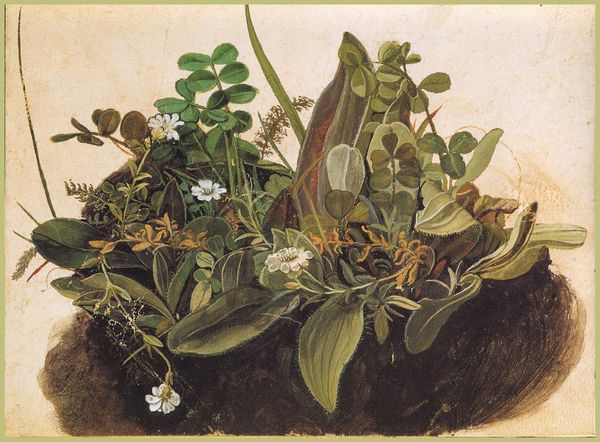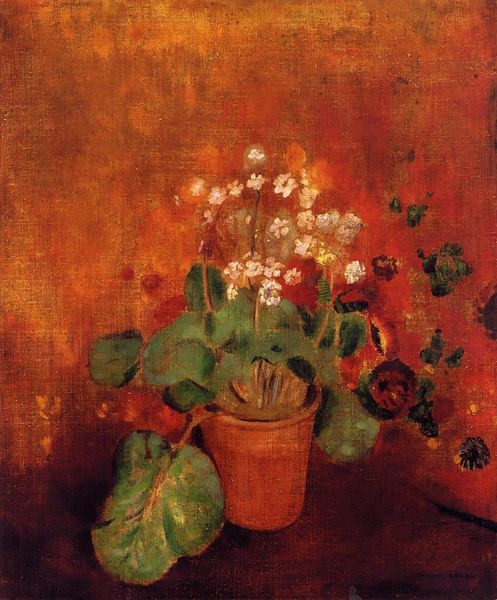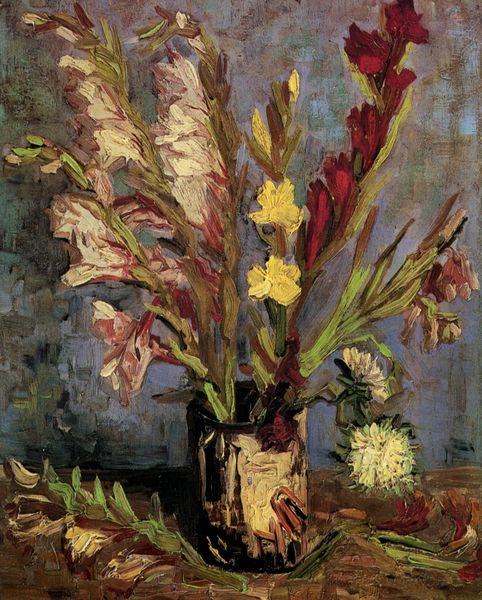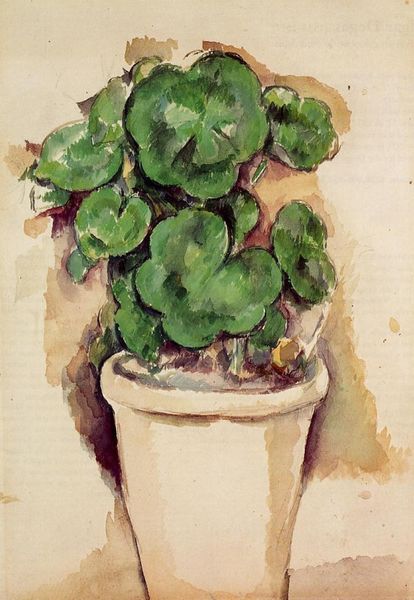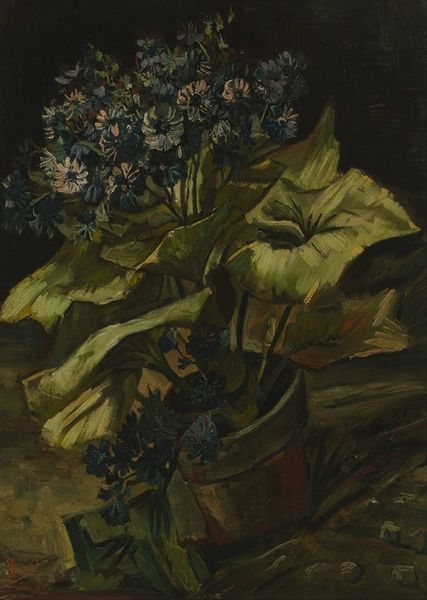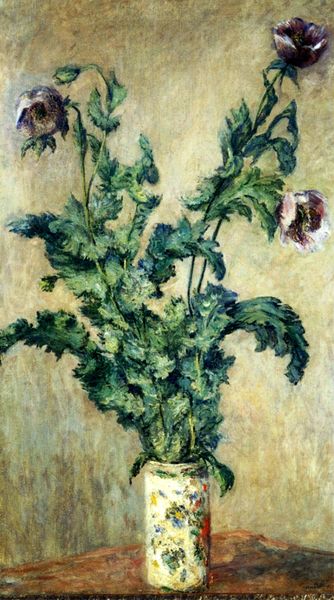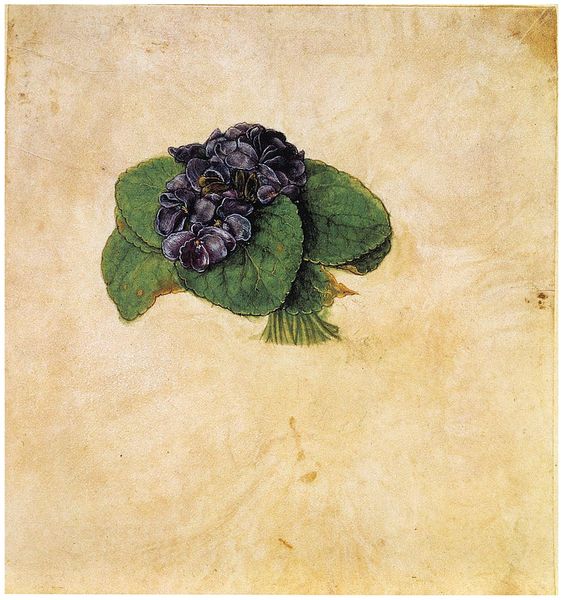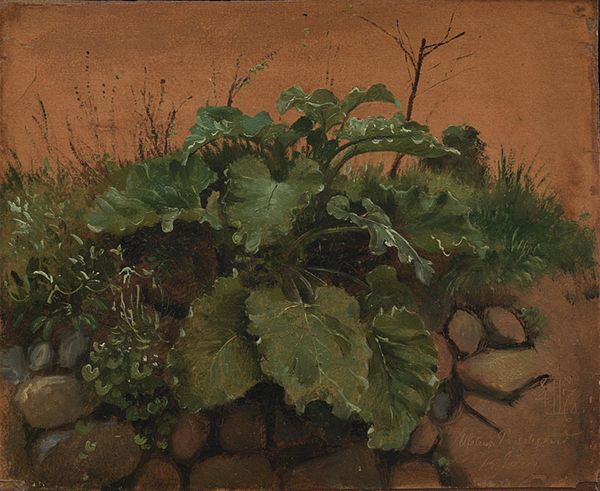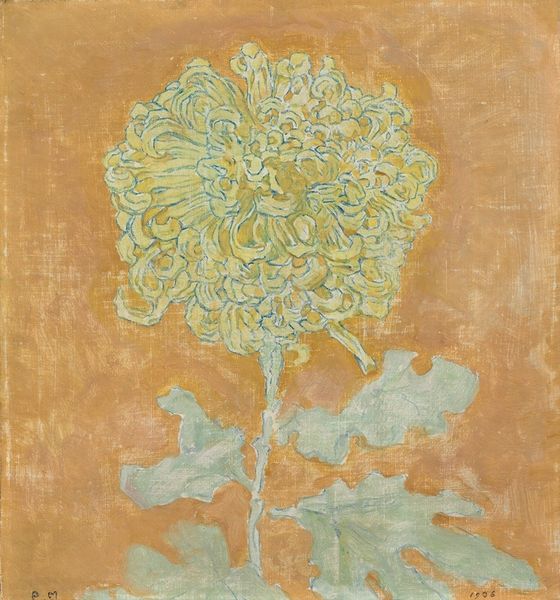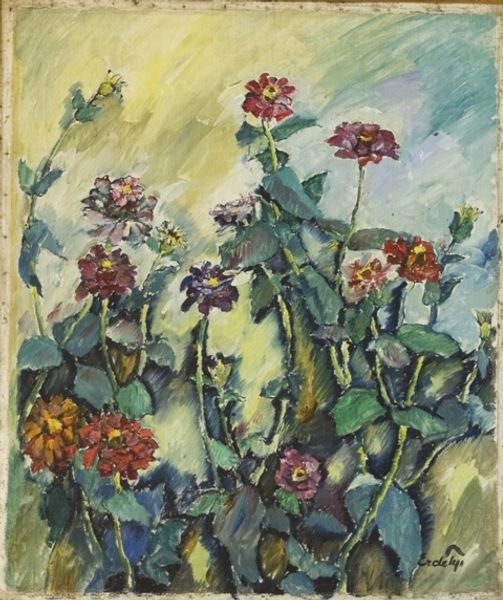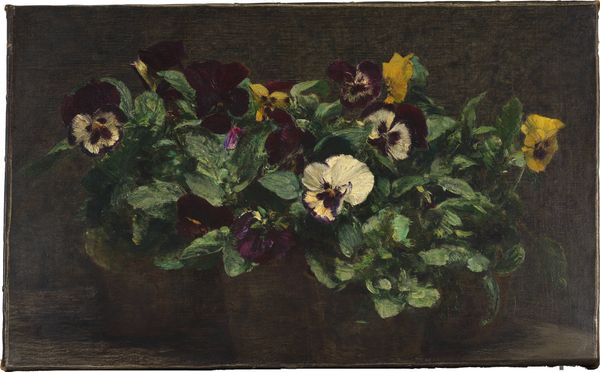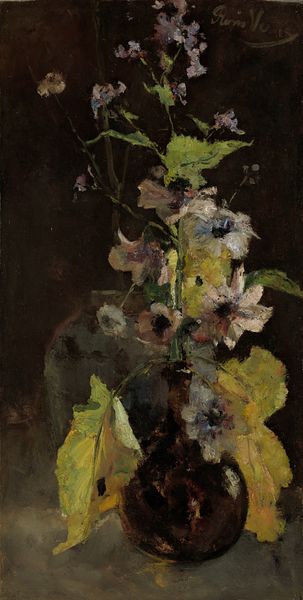
painting, oil-paint
#
portrait
#
painting
#
oil-paint
#
flower
#
11_renaissance
#
oil painting
#
plant
#
botany
#
northern-renaissance
#
botanical art
#
watercolor
Copyright: Public domain
Curator: This is Albrecht Durer's "Primula," painted in 1526. It's an oil painting. Editor: It's… remarkably subdued, isn't it? The colours are so muted, almost earthy, yet the detail is astonishing. I'm immediately drawn to the precision of the botanical rendering. Curator: It speaks to the growing interest in the natural world during the Renaissance. Botanical studies became more prevalent. How does the public consumption of those scientific studies get translated in Dürer’s imagery? Editor: Precisely. This work suggests a specific socio-political context: the rise of the merchant class and their desire to emulate the lifestyles and interests of the aristocracy. The choice to depict the Primula flowers—symbols of spring—speaks to ideas about the circulation of images of renewal and possibly a renewed focus on public health connected to herbal gardens. It also makes me wonder about the process. What sort of tools and oil paints were available to him? What did his studio look like? Curator: Knowing Dürer, he was meticulous. His training in metal engraving surely contributed to that incredible detail. Also, oil paint was becoming increasingly common. You wonder, how do these Northern Renaissance artists start building their knowledge and culture around materiality? How important were their guilds? How important was the access to the patron’s specific materials, like the wood it’s painted on? Editor: These images gained greater prominence due to the growth of mercantile power in this particular moment in history. You need trade to have an artistic practice! I mean, just try getting those materials. And more than just materials. As this merchant class solidified power, its need for visual markers grew. Look at how it is carefully signed too. Dürer himself becomes a kind of logo. Curator: That’s a powerful point, and it reminds us how intertwined the artistic and economic spheres were. I think, even now, it resonates as a moment when craft truly starts to ascend towards 'high' art. Editor: Absolutely. And thinking about its display… Where would this piece have lived? What narratives would this painting engage, whether private and intimate or public and official? Curator: Understanding that really puts its place in history into sharper focus. It prompts interesting avenues for thought, that is for sure.
Comments
No comments
Be the first to comment and join the conversation on the ultimate creative platform.
